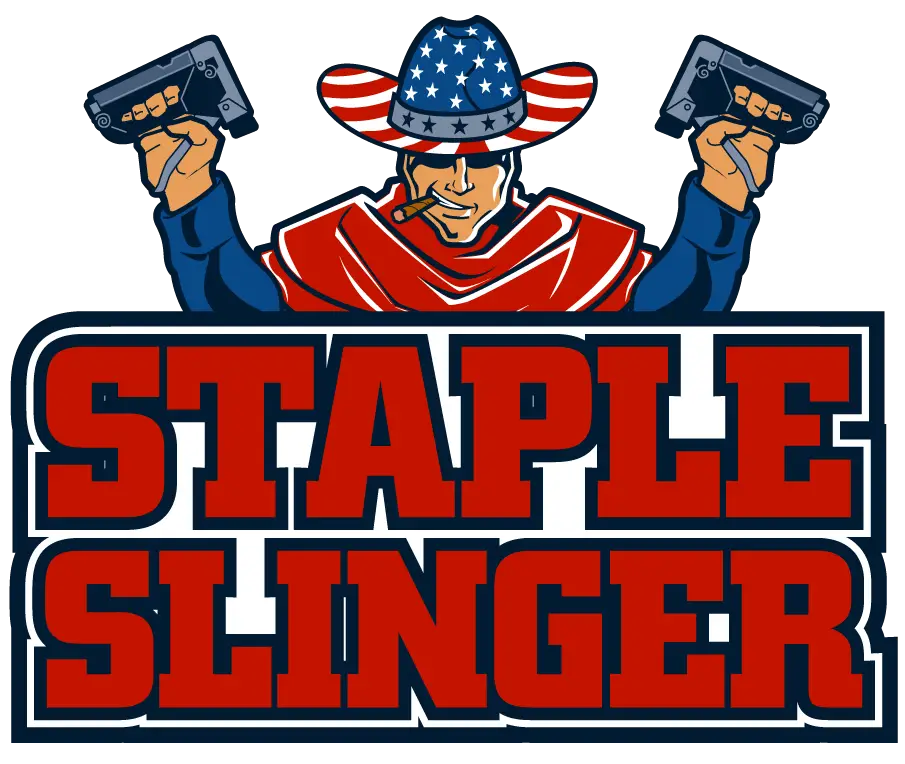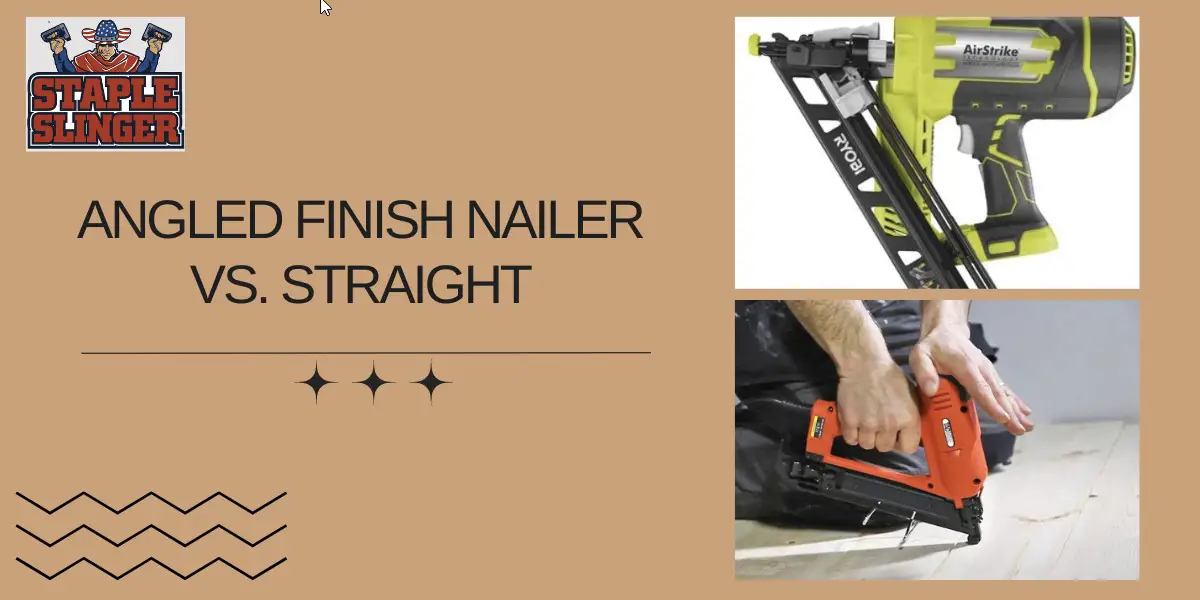Angled finish nailer vs. straight: Which one is best for your needs?
If you are engaged in construction or home improvement (or even other repairs), you will need a power nailer that comes in handy. Electric nailers are much more securer and more comfortable to use than handheld nailers. They also offer much higher accuracy.
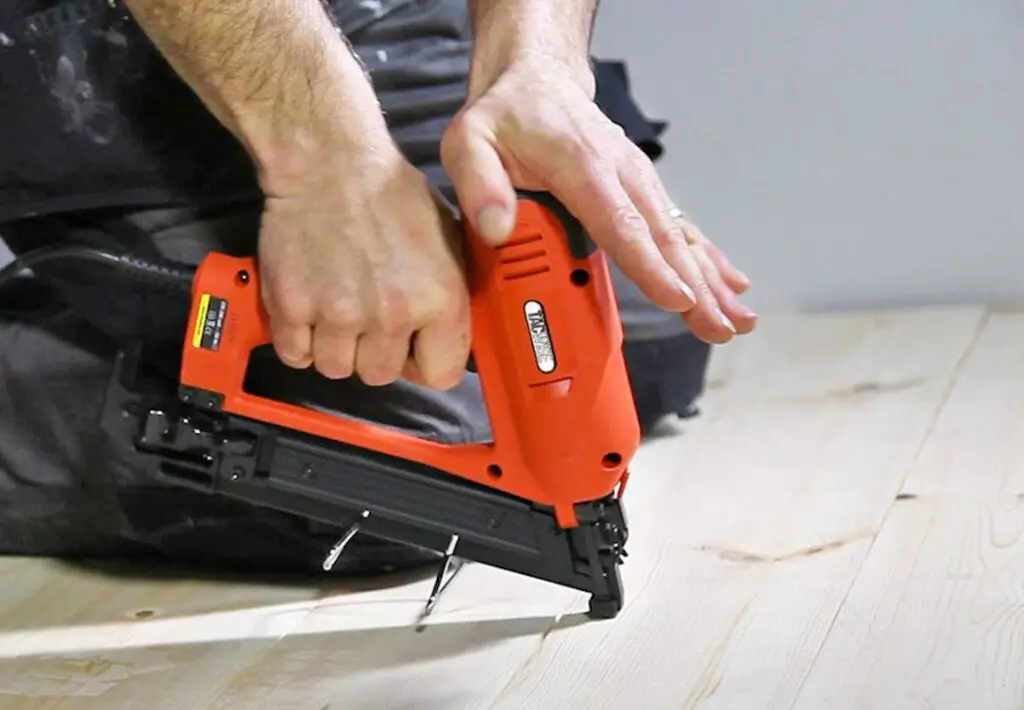
However, there are two main types of nailers: for example, angled nailers and straight-finish nailers.
Angled nailers have an “angled” magazine in the front of the finish nailer, so (obviously) you can use the gun at an angle!
The difference seems so simple, but in the long run, it can lead to huge differences in the performance and suitability of your best project. Let’s take a close look at the differences between angled-finish nailers and straight-finish nailers, so that you know which one is best to buy for your best project or job.
What are an angled finish nailer and a straight finish nailer?
Professionals use powerful power tools capable of long-term hard work. Among them are rotary hammers weighing 4.4 pounds, angle grinders, and concrete cutters. In this review, we will present tools of a different kind, more elegant, which are convenient for performing delicate work.
You know that after the concrete is chipped, the blocks are sawn and holes for the mains are made in the supporting structures, the finishing work begins. These are the technological operations by which we give the structures an aesthetic and attractive appearance.

Among the tools used for their implementation, are the nailers (nail gun) – angled finish nailers, and straight finish nailers.
When to use the finish nailers?
The finish nails are short and thin. It is impossible to securely fasten heavy parts with them. The absence of a head or its execution in the form of a sphere (as a variant of a hemisphere) allows you to drive fasteners as deep as possible, at least flush with the plane of the element – usually deeper.

Such nailers with thinner nails are used for fastening decorative elements – glazing beads, and baguettes.
After that, wooden parts can be polished and finished with varnishes or mastics.
How to hammer finish nails?
We insert wooden plugs into the holes and nail the plinth. When fixing window and door trim, do not drive a nail in the middle of the material, it is better to drive a nail closer to the edge of the product.

If the door trim is made of MDF or veneer, then it is better to drill a hole first and only then drive in a nail with a finish nailer.
| Image | Product | Specifications |
 | Ryobi ONE+ 15 Gauge angled finish nailer | AirStrike™ technology provides comfortable operation without cables, compressors, hoses, or gas cartridges Drives 15G (1.8 mm) nails from 24 mm to 64 mm Keyless adjustment of driving depth helps to protect the surface of the material from damage and at the same time avoid protruding nail heads Blank shot prevention function increases tool life The design of the angled magazine makes it easy to remove jammed nails and load new ones without the use of additional tools Grip-light technology allows you to turn on the LED backlight by pressing a button located on the handle |
 | MAKITA XNB02Z 18V LXT 2-1/2″ straight finish nailer | Ergonomic handle with a rubberized soft grip for increased comfort The narrow nose straight finish nailer makes it easier to drive a nail into hard-to-reach places Straight nailer ideal for finishing work, installation of skirting boards and cornices, flooring, and other woodworking projects Battery and charger are sold separately The dry fire protection mechanism is designed to prevent clogging of the mold and damage to the work surface. A reversible belt clip keeps the tool close at hand. |
2 Best angled finish nailer and straight finish nailer
Best angled finish nailer- Ryobi P330 18V ONE+ Angled Finish Nailer
The Ryobi angled nailer eliminates the need for a compressor. With no air compressor and no wireless connection, you can easily wear angled nailers. The wireless version offers better performance when working on a heavier construction site.

The shape of angled nailers comes in handy when you need to install crown molding or place thinner nails on any corner. They fit into tight spaces without the nailer’s handle hitting a wall.
The Ryobi angled nailer weighs only 6.8 lbs, which won’t tire your muscles with long-term use. In addition, this model angled nailer is spared from bulky hoses and expensive gas cartridges.

Thanks to this, the user can use an angled nailer right out of the box without any setup problems. With a comfortable grip angled nail gun and good weight balance, users can easily drive a nail into hard-to-reach places.
However, angled finish nailers come with an 18V battery and according to users, it can drive between 750 and 800 nails. The magazine can hold an average of 105 finish nails for tight turns.

These angled nailers use 15 gauge finish nails and are easy to find in nearby stores. In addition, angled finish nailers can drive nails from 1 inch to 2-½ inches, providing versatility.

The Ryobi AirStrike 15 gauge nail gun features the signature scratch-resistant tip as well as dry-fire interlock to protect surfaces.
Best straight nailer – Makita XNB02Z 18V LXT 2-1/2″ straight finish nailer
Reliable, lightweight, easy-to-use pneumatic finishing nailer Makita XNB02. Straight nailers are suitable for fastening panels, and sheets, sheathing and insulating a house, when installing windows, doors, skirting boards, flooring, or for packaging. Makita opts for a metal rear-loading straight magazine.

Makita straight finish nailer competes well in the cordless nailer category due to its quality build and great performance.
For straight nail guns, the biggest benefit will be the time and effort you save in not having to set up the compressor, run the hose, and then completely reverse the entire process when you’re done. Everyone expects to be able to handle the extra weight of straight nailers.

The Makita XNB02 finish nailer is different, weighing 6.9 pounds unpacked on our scale and 7.75 pounds with the 2.0Ah battery.
The balance is very forward if you use it in a vertical orientation. If you switch to a horizontal hold near a ceiling or floor, it will still move forward. However, the balance between the hood and battery is under control.

Again, almost all the cordless nailers you use have the same weight distribution. This is something you have to get used to when you switch from pneumatics.

The handle is very comfortable due to the combination of shape and rubber coating. The diameter is slightly larger than the Makita actuators, but it’s near perfect to work with the weight and balance of this gun.
What to be guided by when choosing a nailer?
First of all, decide what type of energy will be used to power the nailer: gas from the ignition of some substance; compressed air (pneumatics); alternating current – from the network or generator; direct current from a galvanic battery or accumulator.

Nailers with ignition
In such models of nailers, the energy source is a cartridge filled with combustible gas (methane, for example). In their design, there is a dosing device, a spark plug, a cylinder, and a piston drummer. They operate on the same principle as two-stroke internal combustion engines. Only during operation with nailers, make one cycle.

Advantages:
- Powerful, able to drive large nails into hardwood
Disadvantages:
- You need to buy gas bottles
Electric nailers – mains or battery
Electric nailers can run on both AC power and batteries. Their design is based on a solenoid and a core striker moving in an electromagnetic field.

Advantages:
- No external energy source is required – compressors, and gas cylinders. With cordless models, you can work anywhere – on the roof, in the forest, or in the field. Dependence on the weather and outside temperature is minimal.
Disadvantages:
- Dependence on the health of the electrical network. For battery models, downtime during battery charging is relevant.
Other factors to consider when buying a nailer
- The fastener size you are using. Will it fit the nailer, and will it have enough power to drive such a nail right up to the head?
- Is it possible to adjust the depth of driving, and do you need such an option?
- Where will you work – in the workshop, on the construction site, or in the field? Which energy sources suit you best – pneumatics, combustible gas, or electricity?
- Are you going to do finishing work? Choose a model whose tip does not leave marks on the parts, for example, a finish nailer.

Why does a nail gun have different angles?
Before you understand the reason for using different angles, you need to know what an angle is. The angle of the frame driver expresses the sorting of the nails. Both rod and spiral nailers have individual nail angles.
Different angles give you the edge in the toughest corners when driving nails.
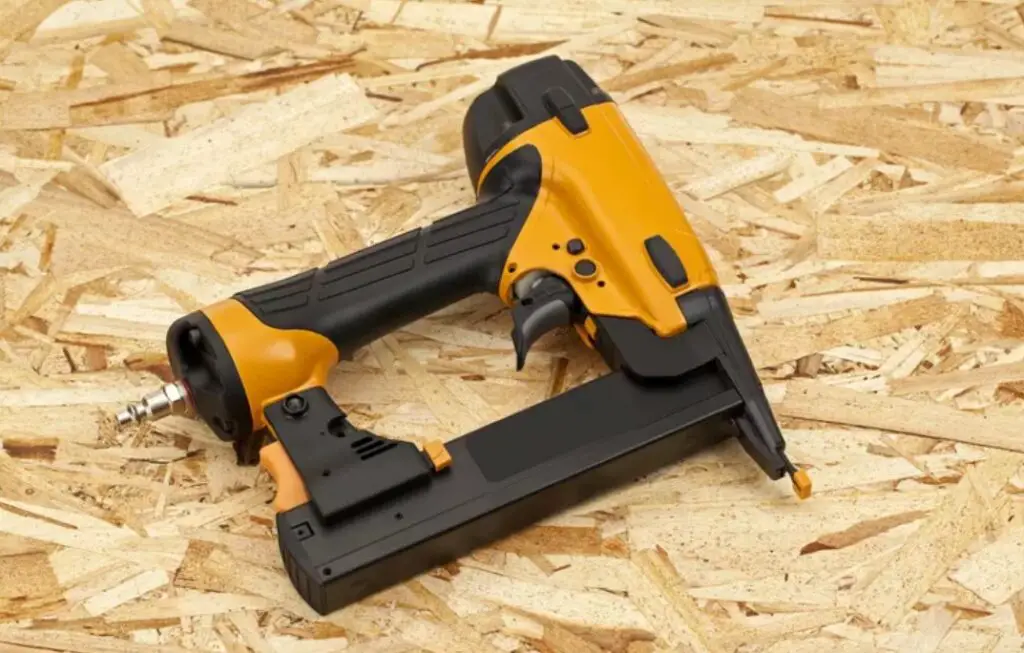
The enlarged nail angle allows more access to the tricky corner. Some projects need to be done with a 15-degree nailer. However, more specialized applications require a larger nail angle, such as B. 21-degree nail gun or a 30-degree nail gun.
To learn more about Straight vs. Angled Finish Nailer, check out this post here.
FAQs:
As discussed in this post, there is no “best” nailer. That being said, the angled nailer is probably more versatile than the straight-finish nailer.
This versatility comes from the ability to use larger nails for both rough and delicate work, although larger nails can leave larger marks than finer work. Conversely, you can’t use relatively smaller nails for rough work because then they won’t be strong or long enough.
With brands, you usually get what you pay for. This means that if you spend more money upfront, you’re likely to buy a nail gun that will last longer, take more abuse, and be more accurate.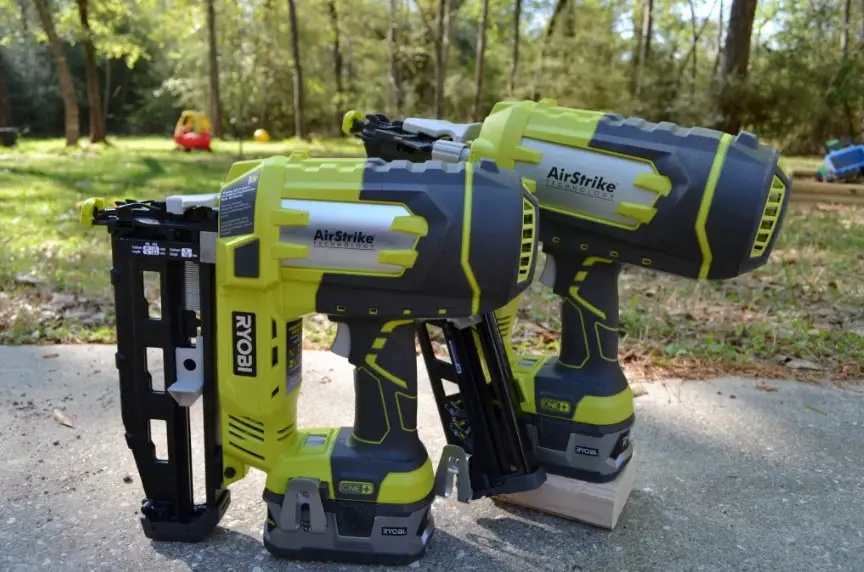
The ability to tilt the front of the machine back prevents the front of the tool from hitting the workpiece, allowing you to drive nails into tight corners or close to the ground. This would not be possible if you were using a straight nailer, and in these cases, an angled nailer is invaluable.
Sorry, no, you must use the angled nails specified for use with your particular nailer model number. Angled nail guns are angled to penetrate smaller and tight spaces than straight nailers. You use sets of nails that match the degree of angle of the nailer.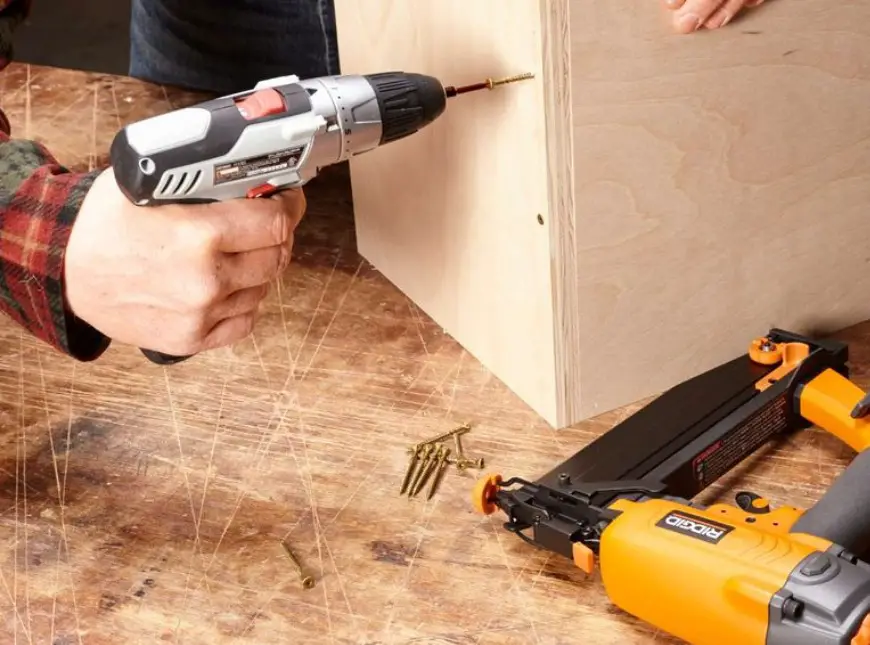
A straight nailer is a gun designed to drive nails into wood, making things like assembling furniture or making frames easier and faster. This tool has a long barrel with a narrow point at the front. This allows you with a straight nailer to get closer to the workpiece for more precise nailing.
Conclusion finish nailer
Finally, both nailers can be great home repair or renovation tools. If you have the money, you can get one of each. Otherwise, use the nail guns that best suits your immediate needs.
If you need to read about what size air compressor for nail gun, please read our article.
Read on site: Best Staplers for 50 Pages (2024)
